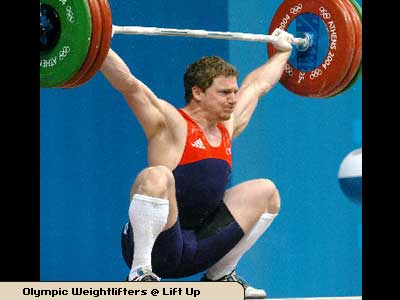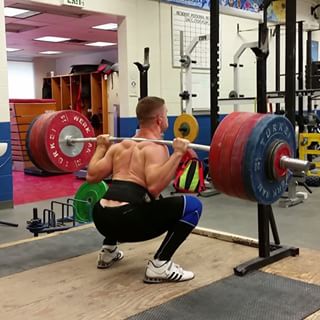Because we are thankful for you, Black Friday Specials start right now with a 20% off store wide sale at: http://www.mashelite.com/blackfriday/
===================
Sale includes:
-All new apparel!
-Squat Every Day Shirts
-New “I Do What I Want” shirts
-New prints of the Original Dumbbell by Drew Mash
-All E-Books except the brand new ones that are already on sale
-And so much more!
Enjoy! And Happy Thanksgiving from all of us at Mash Elite!
The Most Awesome Exercise on Earth: The Squat
Yesterday I was reading through a few people’s take on the squat. I probably spent two hours reading through articles and research. There are entire social media sites and websites that are based around the squat. I am assuming because the squat is probably the most functional exercise on earth along with the deadlift.
Powerlifters squat because it’s a part of their sport. Weightlifters squat to get better at their sport. CrossFitters squat because it may be a part of their sport, and it definitely helps with their sport. Other athletes like football players and soccer players use the squat to get faster, jump higher, and to get more powerful.
Personally I squat now for movement, general strength, and muscle mass. All three of these are required for quality of life, as one gets older. I still like to be strong. Don’t get me wrong. I just squatted 650lb last year raw, so I like to be strong. I am just saying that strength isn’t the main concern anymore.
As you can see, squatting should be a primary movement no matter what you are doing, so that makes it a very important subject in the strength and conditioning world. It’s funny to me really because squatting came so easily to me. I never really sat down and thought about the biomechanics and physics of the movement until about five years ago. Even the way I taught the squat just came natural.
After all of my studies, I still teach squatting the same way. Here’s the thing. There aren’t a lot of absolutes. Squatting is very individual, and the following points should be considered:
• What sport or purpose? Ex. Weightlifting, powerlifting, team sport, general strength, etc.
• Hip anatomy
• Femur and torso length
• Overall mobility
These are a few to consider right off the bat. I love what Greg Nuckols wrote in his ridiculously long article about the squat. You guys should check out his site www.strengththeory.com if you don’t already. He really breaks downs the mechanics, anatomy, and physics of the back squat. I love how Greg only uses research when he makes absolute statements. If there is no research to back up a claim, then Greg leaves it up to the reader and experience.
Here’s the problem. There are a lot of people that are making absolute statements about the back squat. Here are some absolute statements:
• Eyes up
• Eyes Straight ahead
• Eyes down
• Neutral spine
• Sit down
• Sit back
These are a few that I want to quickly address. Which is right? Which is wrong. The answer is that they are all wrong and all right. There is not concrete research on any of these that I can find. Now I am going to do more research on my own with a few of my PhD friends, so stand by for that. However as of now, there isn’t a lot out there, so I have to give a few of my observations.
First, with the eyes I can say that I have witnessed people squatting big weight with their eyes up, down, and straight ahead, so it’s hard to say which is best. I watched the USAPL Raw Nationals, and I saw a lot of people squatting with eyes up and down. However it appeared that most of the medalists were eyes up. I will also say that most of the top squatters that I know are eyes slightly up, but that doesn’t make it right.
The reason that I prefer eyes out and slightly up is because my body tends to follow where I am looking. Most powerlifters have developed legs and hips strong enough to squat massive amounts of weight. Normally the squat is won or lost with the amount of torso lean especially out of the hole. If the butt shoots up without maintaining the relationship with the shoulders, the lifter get put in a bad position right away. When a lifter is thrown into a goodmorning type of squat, two things happen:
1. You have now increased the hip flexor moment (Hip flexor moment = load x horizontal distance between the center of mass and the hip.)
2. You have shifted all the stress to the extensor muscles of the hamstrings, glutes, and low back. You have taken the quads out of the movement.
The goal is to avoid this position if possible. If you can maintain a good angle for the hips and shoulders while looking down, then go for it. The argument for looking down is to maintain a neutral spine to recruit more fibers and reduce the risk of cervical spine injuries. To date I have never seen anyone hurt their neck squatting, and I don’t know of any research to support a claim either way (eyes up or down). With that being said, find something that works and go for it.
Now my favorite controversy of late is the sit down v sit back. I know powerlifters that sit back maintaining almost vertical shins. I also know powerlifters that sit down. The main difference is the joint that initiates the movements. The sitting back is initiated at the hip. Sitting down is initiated at the knees and hips simultaneously. There are pros and cons of each, so let’s take a look.
1. Sitting back- When you initiate the movement at the hips by sitting back, you initiate the movement by engaging the hamstrings and glutes. The big thing with this type of movement is that your range of motion will be cut short, since those two muscles are mainly responsible for the range of motion in the squat. If you start to lengthen them earlier, you will obviously reach full ROM earlier.
That’s a good thing for powerlifters that only want to barely break parallel. The tightness will cause a stronger stretch-reflex action helping to propel the lifter upwards. However if you are a weightlifter, bodybuilder, or other athlete, this isn’t as good a thing.
The only two things that affect muscle hypertrophy during the squat are the load and the ROM. Full range of motion will recruit the most fibers, and it will also promote greater mobility. Mobility is key when it comes to weightlifting. Mobility is also key for someone like me who is focusing on general strength. Vertical leap and increases in speed have also been tied to fuller range of motion high bar squats, so if you play football, that’s the way to go.
Promoters of the sitting back style would also say that shearing forces of the knee are reduced with keeping the shins more vertical. However the studies would tell a different story. Basically the shearing forces on the low back and the knees are the same no matter the style.
3. Sitting down- By initiating the movement at the knee and the hips, you will be able to sit as low as possible maintaining a more vertical back. For weightlifters it’s key to mimic the sport and promote the ROM required to perform the snatch and clean & jerk. You will lose that glute and hamstring tightness, so you want squat quite as much weight at least at first. However the strength gained from this type of squat will transfer over to sport much better.

Well there you have it. You have choices to make. There are pros and cons of each. At the end of the day it depends on your goals. Be careful of any coach that gives absolutes without concrete evidence to back up their claims. I wouldn’t even take their word for it if they were a doctor, strength coach, or world champion without evidence. This is advice that you should apply to all things in life.
Because we are thankful for you, Black Friday Specials start right now with a 20% off store wide sale at: http://www.mashelite.com/blackfriday/
===================
Sale includes:
-All new apparel!
-Squat Every Day Shirts
-New “I Do What I Want” shirts
-New prints of the Original Dumbbell by Drew Mash
-All E-Books except the brand new ones that are already on sale
-And so much more!
Enjoy! And Happy Thanksgiving from all of us at Mash Elite!

Loved squatting for years.Former competitive power lifter and was in a kick of heavy high rep (20’s)squatting. Actually worked up to 270. The same for deadlifts. Had to give up both because of physical job and some arthritis in knees and low back issues. Resorting to leg presses, hack squats and extensions/curls! Greasy movements but be very careful as you get older and be cautious of the spinal loading on your back! Happy training
Pingback: The Squat Part II | Mash Elite Performance